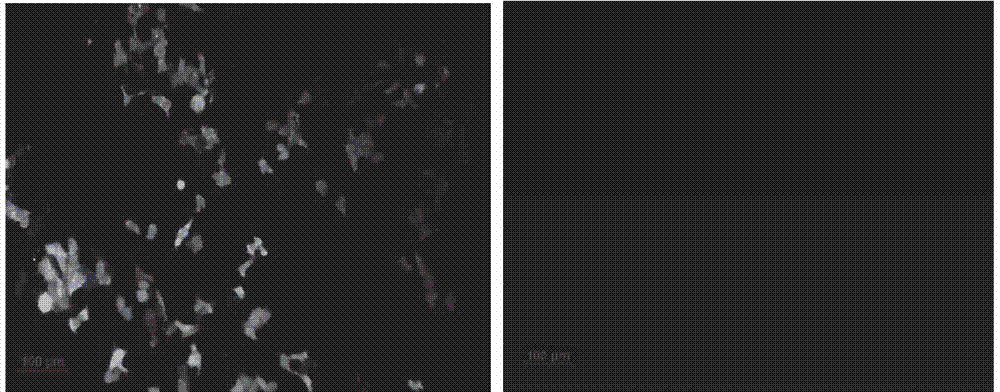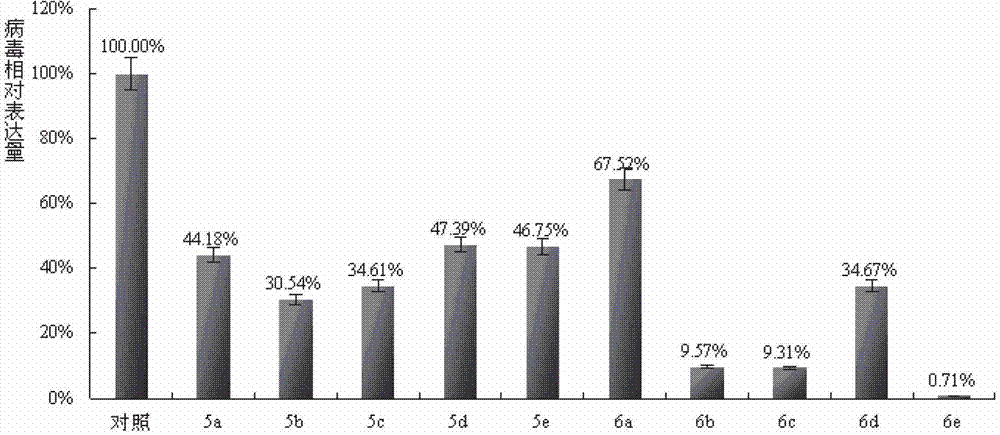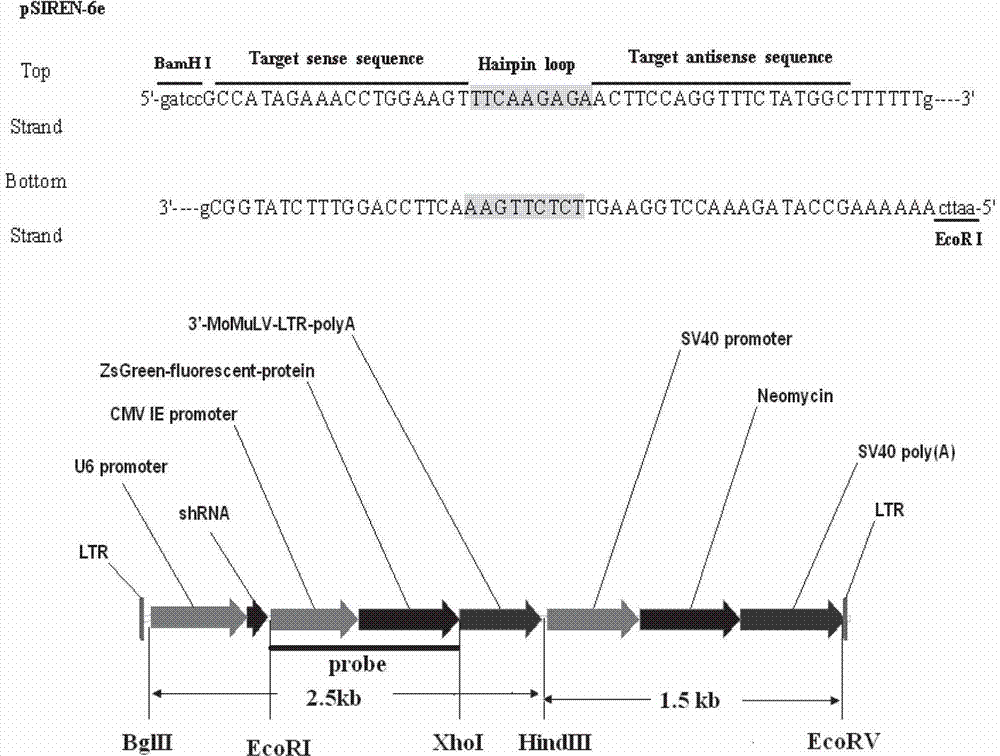Method for establishing transgenic cell line of target genes shRNA (short hairpin ribonucleic acid) interfering propagation of porcine reproductive and respiratory syndrome viruses
A technology of transgenic cell lines and porcine PRRS virus, applied in the direction of microorganism-based methods, cells modified by introducing foreign genetic material, antiviral agents, etc., can solve problems such as difficulty in inducing antibody levels
- Summary
- Abstract
- Description
- Claims
- Application Information
AI Technical Summary
Problems solved by technology
Method used
Image
Examples
Embodiment 1
[0069] Embodiment 1, the design, synthesis, vector construction of the targeting gene shRNA aimed at the proliferation and replication of porcine PRRS virus
[0070] According to the structural sequence and shRNA sequence design principles of PRRSV-ORF5 and PRRSV-ORF6 protein genes, 5 pairs of shRNA sequences were designed respectively for PRRSV-ORF5 and PRRSV-ORF6; the 10 pairs of shRNA sequences are described in Table 1 and Table 2. :
[0071] Table 1. shRNA design for PRRSV-ORF5
[0072]
[0073] Table 2. shRNA design for PRRSV-ORF6
[0074]
[0075] The 10 pairs of shRNA sequences were annealed to form double strands with cohesive ends, which were directly connected to the linearized RNAi-Ready pSIREN-RetroQ-ZsGreen vectors to construct 10 RNA interference vectors; the plasmids (i.e. the above 10 RNA interference carrier) DNA was introduced into Marc-145 cells under the mediation of transfection reagents, and fluorescence observation was carried out after 24 hours ...
Embodiment 2
[0081] Embodiment 2, the establishment of the transgenic cell line of anti-porcine PRRS virus propagation
[0082] The vector PXL-BAC2-FRT-EGFP-NEO-shRNA and helper were respectively used lipofectamine 2000, FuGENE HD and Lipofectamine LTX & PLUS three transfection reagents were used to transfect Marc-145 cells, and the transfection efficiency, clone formation rate and positive clone rate were compared to select a screening method suitable for high-efficiency shRNA transfection.
[0083] details as follows:
[0084] 2.1 Construction of recombinant vector PXL-BAC2-FRT-EGFP-NEO-shRNA
[0085] Such as figure 2 As indicated, zsGFP and NEO fragments were amplified by PCR, and the shRNA (6e) was digested (EcoRI-BamHI
[0086] ) was connected to the pMD18-T Simple vector, digested by BglII-EcoRV, recovered, and connected to the PXL-BAC2 vector to construct the recombinant vector PXL-BAC2-FRT-EGFP-NEO-shRNA, and the constructed recombinant vector was digested by And sequencing i...
Embodiment 3
[0100] Example 3. Target gene integration and expression detection in transgenic cells resistant to propagation of porcine PRRS virus
[0101] 3.1 GFP and Neomycin in the genome of transgenic cell lines r Insert detection
[0102] Using the transgenic cell line obtained in Example 2 as a material to extract the genome as a template, design upstream and downstream primers respectively, specifically: the GFP primer sequence as described in SEQ ID NO 1 (the PCR amplification product contains CMV+GFP, and the predicted molecular weight is 1400bp) and Neomycin as described in SEQ ID NO 2 r The primer sequence (the molecular weight of the product after PCR amplification with this primer is predicted to be 2000bp) was used for PCR amplification.
[0103] SEQ ID NO 1: Transgenic cell line GFP amplification primer sequence (CMV+GFP≈1400bp)
[0104] EGFP-F: 5'-GagatctgaagttcctattctctagaaagtataggaacttcTAGTTATTAATAGTAATCAATTACGG-3'
[0105] EGFP-R: 5'-GaagcttTTCACCGTCATCACCGAAA-3'
...
PUM
 Login to View More
Login to View More Abstract
Description
Claims
Application Information
 Login to View More
Login to View More - R&D
- Intellectual Property
- Life Sciences
- Materials
- Tech Scout
- Unparalleled Data Quality
- Higher Quality Content
- 60% Fewer Hallucinations
Browse by: Latest US Patents, China's latest patents, Technical Efficacy Thesaurus, Application Domain, Technology Topic, Popular Technical Reports.
© 2025 PatSnap. All rights reserved.Legal|Privacy policy|Modern Slavery Act Transparency Statement|Sitemap|About US| Contact US: help@patsnap.com



